Disclosure: This article contains affiliate links. We may earn a commission from purchases at no extra cost to you, which helps our travel content.
Last summer, while guiding my dear friend Claire and her grandchildren through the winding cobblestone paths of Mont-Saint-Michel, I witnessed something remarkable. Ten-year-old Emma, typically glued to her tablet, stood transfixed before the abbey's soaring Gothic arches, peppering me with questions about medieval construction techniques. Her brother Lucas, age eight, abandoned his usual restlessness to count gargoyles along the ramparts. That magical afternoon reminded me how sacred spaces can captivate even the youngest minds when approached with imagination. Though I've primarily documented these sites through an art historian's lens, sharing Mont-Saint-Michel with children revealed new dimensions of wonder in this tidal island monastery I've visited a dozen times since my pilgrimage days. This ancient Norman marvel—rising dramatically from misty waters—offers families a rare opportunity to step physically and imaginatively into medieval France, creating memories that will endure long after the journey ends.
Planning Your Family's Medieval Pilgrimage
Mont-Saint-Michel demands thoughtful preparation, particularly when traveling with young companions. While spontaneity has its merits in solo journeys, I've learned from accompanying Claire's family that structure provides the foundation for meaningful exploration with children.
Consider timing carefully. Summer offers extended daylight hours and the full spectacle of tourism, but also brings formidable crowds. I recommend early June or late August when school holidays thin slightly but weather remains favorable. Arriving either very early (before 9 AM) or later afternoon (after 3 PM) helps navigate around tour bus schedules.
Accommodation deserves special attention. While staying directly on Mont-Saint-Michel provides unparalleled atmosphere—watching tides transform the landscape from your window is truly magical—the premium prices and limited space make mainland options more practical for families. Several charming hotels in Pontorson or Avranches offer family rooms at reasonable rates with shuttle access to the site.
Before departing, invest time in age-appropriate historical context. Claire wisely introduced her grandchildren to the concept of medieval monasteries through illustrated books. The excellent children's guidebook sparked genuine curiosity with its engaging illustrations and simplified history. Eight-year-old Lucas arrived already fascinated by knights and eager to spot defensive features along the walls.
Perhaps most importantly, approach this journey as a pilgrimage of sorts—not religious necessarily, but intentional. Mont-Saint-Michel has welcomed seekers for over a millennium. Encourage children to consider what people throughout history sought when making this difficult journey across dangerous tidal flats.
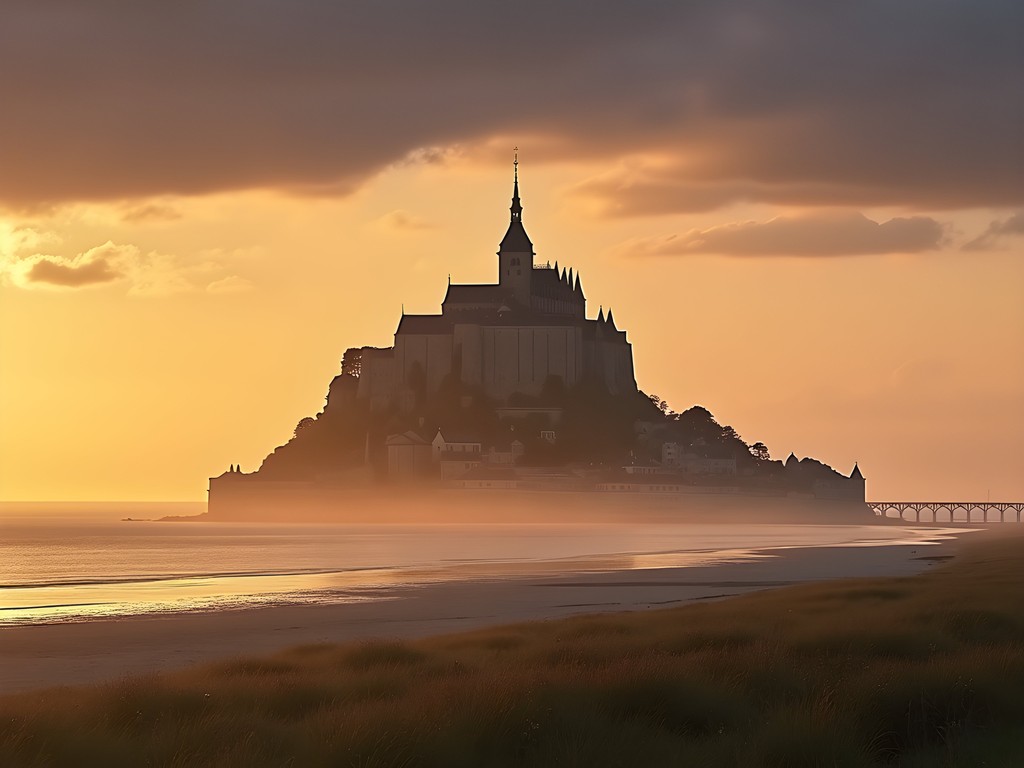
💡 Pro Tips
- Book accommodation at least 3-4 months in advance for summer visits
- Download the official Mont-Saint-Michel app for interactive maps and child-friendly explanations
- Consider staying on the mainland for more space and better value for families
Transforming History Lessons into Treasure Hunts
"Aunt Sophia, is this where the knights fought the dragons?" Lucas asked earnestly as we climbed the Grande Rue. While historically inaccurate, his question revealed the perfect entry point for childhood engagement—imagination.
Rather than correcting him immediately, I suggested we become historical detectives. "Let's look for clues about who really lived here and what they did," I proposed, transforming our walk into an investigative adventure. This simple reframing sparked hours of enthusiastic exploration.
The winding main street offers natural investigation stations. We paused at La Mère Poulard, famous for its omelets since 1888, to discuss how pilgrims needed sustenance after their journey. The children were fascinated by the massive copper pans and wood-fired ovens still used today. While the restaurant itself exceeds most family budgets, the adjacent shop offers reasonably priced cookies that make excellent souvenirs.
For Emma, architecture became accessible through a simple sketching exercise. I brought several travel sketchbooks and encouraged her to draw interesting details—arches, windows, gargoyles—that caught her attention. This slowed our pace beautifully and deepened her observation skills. Even Lucas, initially resistant, became absorbed in drawing imaginative gargoyle faces.
The maritime museum, though small, captivated both children with its model ships and explanation of the treacherous tides. We created a simple scavenger hunt: find three ways people traveled to the island throughout history, identify two dangers they faced, and locate one example of how monks received supplies.
Most successful was our "secret code" game within the abbey itself. Before visiting, I prepared a simple cipher where architectural elements corresponded to letters. The children decoded a message by identifying flying buttresses, rose windows, and column capitals—architectural terms that would have otherwise seemed tedious became exciting clues in our mystery.
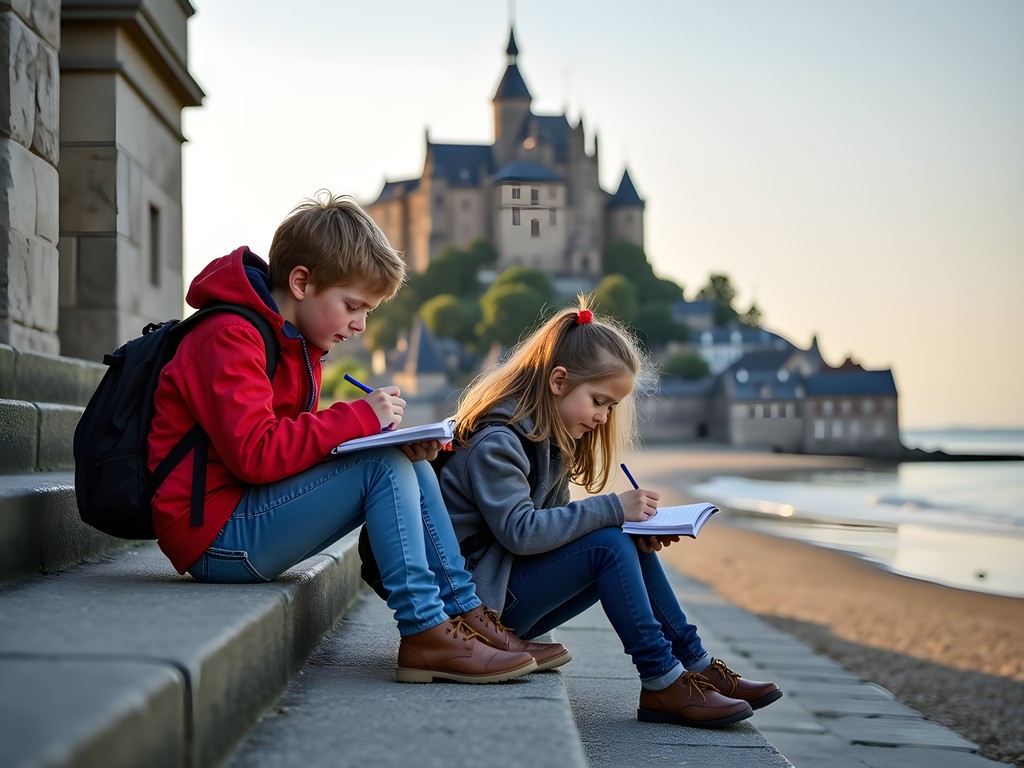
💡 Pro Tips
- Create simple scavenger hunts focusing on architectural details or historical elements
- Bring sketchbooks and colored pencils for artistic breaks that encourage careful observation
- Frame the visit as solving a historical mystery rather than a standard tour
Navigating the Abbey with Young Explorers
The abbey itself presents both the greatest reward and challenge for families. Its 900-year history encompasses remarkable architecture spanning Romanesque to Flamboyant Gothic—a veritable textbook of medieval design evolution. Yet for children, the labyrinthine layout and historical complexity can quickly become overwhelming.
During my visit with Claire's family, we adopted a selective approach that honored both adult appreciation and childhood attention spans. Rather than attempting a comprehensive tour, we identified three focal points: the church's nave with its soaring vaults, the cloister with its meditative garden, and the massive wheel that once hoisted supplies from the bay below.
The key was pacing. We entered early, at 9:30 AM, when crowds remained manageable. After exploring each highlighted area, we found quiet corners where the children could rest while absorbing the atmosphere. The western terrace proved particularly valuable—offering spectacular bay views and space for physical movement after periods of attentive listening.
Audio guides designed specifically for children are available at the entrance, worth every euro for their engaging storytelling approach. Emma and Lucas wore their wireless headphones connected to shared devices, allowing Claire and me to simultaneously enjoy the adult commentary while they received age-appropriate content.
The marvel of Mont-Saint-Michel's construction became tangible through simple demonstrations. Using a small pocket compass, we showed how the abbey church aligns precisely east-west, sparking conversation about medieval engineering precision without modern tools. When Lucas inevitably asked about toilets (a perennial childhood fascination), we located the medieval latrines—prompting uproarious laughter and genuine interest in daily monastic life.
The crypts and underground chapels held particular fascination, their mysterious atmosphere inspiring whispered theories about secret passages and hidden treasures. Here, I shared how medieval pilgrims believed touching Saint Michael's relics could heal illness—connecting ancient spiritual practices to the children's understanding of hope and faith.

💡 Pro Tips
- Visit the abbey early morning or late afternoon to avoid peak crowds
- Rent the children's audio guide for engaging age-appropriate commentary
- Plan strategic rest breaks with views or interesting features to prevent fatigue
Tidal Rhythms and Natural Wonders
Mont-Saint-Michel's most dramatic feature—its relationship with some of Europe's most extreme tides—offers a natural science lesson more captivating than any classroom demonstration. During my visit with Claire's family last July, we deliberately planned our three-day stay to witness both high and low tide conditions.
The tidal range here can exceed 45 feet during spring tides, transforming the landscape twice daily from an island surrounded by water to a hill rising from vast sand flats. This phenomenon provided endless fascination for the children, who created a simple tide journal with time-lapse photos taken from the same vantage point throughout our stay.
On our second afternoon, we joined a guided bay walk—an experience I cannot recommend highly enough for families with children over seven. These excursions, led by certified guides familiar with the quicksand and rapidly returning tides, allow you to explore the bay safely. Our guide Mathieu explained how pilgrims once crossed these dangerous sands, pointing out remnants of the original pilgrimage path now mostly reclaimed by the sea.
The children were mesmerized by the quicksand demonstration, where Mathieu showed how to extract oneself if accidentally trapped. Lucas declared this "better than any science experiment at school" as he tested the strange properties of the saturated sand. For parents concerned about safety, quality water shoes are essential—the bay floor contains sharp shells and occasional debris.
Birdwatching added another dimension to our natural exploration. The bay hosts remarkable avian diversity, particularly during migration seasons. Emma, initially skeptical, became quite the enthusiast after spotting oystercatchers with their distinctive orange beaks. We hadn't anticipated this interest and found ourselves wishing we'd brought proper binoculars.
The relationship between abbey and environment sparked meaningful conversations about human adaptation to natural conditions. Claire's grandson observed thoughtfully how the monks built their sanctuary just beyond the reach of highest tides, prompting discussions about medieval understanding of natural cycles and humanity's persistent desire to dwell at the threshold between elements—neither fully of the earth nor fully of the sea, but somewhere in the liminal space between.
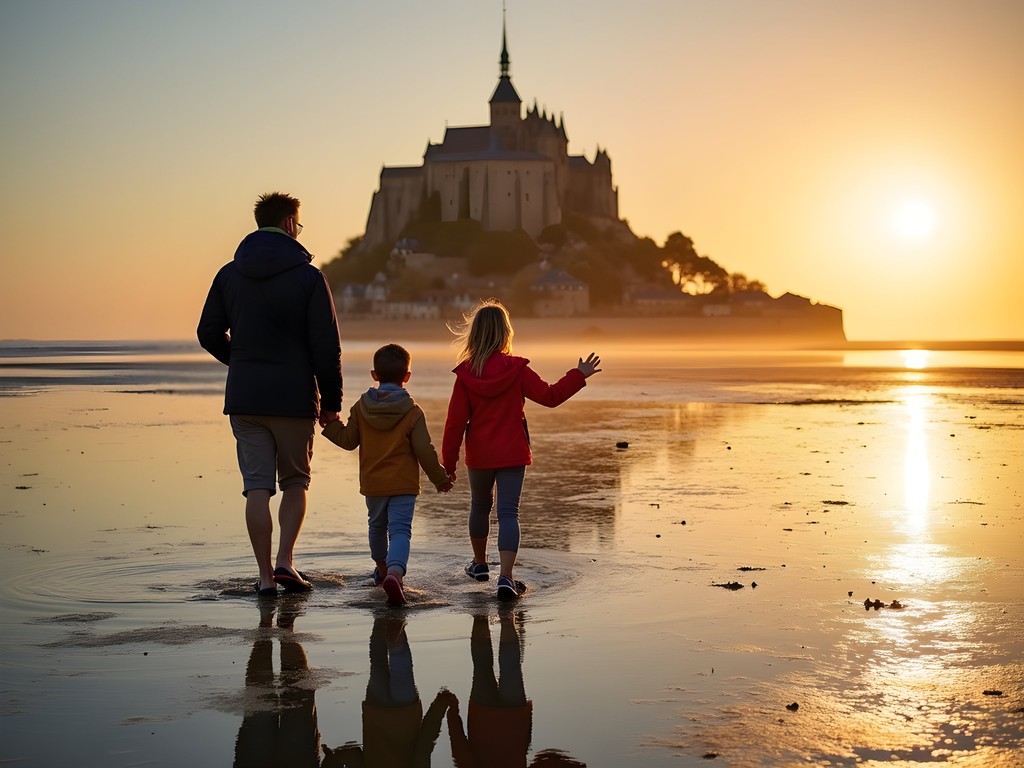
💡 Pro Tips
- Check tide schedules carefully and plan your visit to witness both high and low tide conditions
- Book guided bay walks well in advance as they fill quickly, especially in summer
- Bring water shoes, towels and a change of clothes for bay exploration
Creating Medieval Memories Beyond the Island
While Mont-Saint-Michel itself deserves center stage, the surrounding Norman countryside offers complementary experiences that reinforce medieval themes while providing welcome contrast to the abbey's intensity. During our family journey, we discovered several nearby activities that deepened the children's connection to the period.
In Avranches, just 20 kilometers south, the Scriptorial Museum houses precious manuscripts once produced by Mont-Saint-Michel's monks. What could have been a rather dry exhibition became fascinating through the museum's clever interactive displays. Emma and Lucas spent an hour at the calligraphy station, learning to write with quill pens on parchment-like paper, gaining tangible understanding of medieval book production. Their proud creations now hang framed in their bedrooms—souvenirs with genuine educational value.
The medieval garden at the museum's entrance provided another sensory connection to monastic life. The children identified herbs once used for medicine, cooking, and manuscript pigments. This sparked a memorable dinner conversation about how people healed themselves before modern medicine—Lucas was particularly intrigued by the concept of bloodletting and herbal remedies.
For families needing active release after contemplative abbey exploration, the nearby town of Pontorson offers bicycle rentals perfect for exploring the pastoral landscapes. We spent our final morning cycling along the Couesnon River on well-maintained paths suitable for children. The family picnic backpack we brought proved perfect for our riverside lunch, where we spotted herons fishing in the shallows.
Perhaps most memorable was our impromptu evening at a local farm that produces traditional Norman apple cider and calvados. While the adults sampled the region's famous apple brandy, the children pressed apples in a hand-cranked mill and collected eggs from the henhouse. The farmer, Monsieur Beaumont, demonstrated how little agricultural techniques had changed since medieval times, creating a living history lesson more impactful than any museum display.
These countryside experiences provided necessary balance to the concentrated history of Mont-Saint-Michel itself. The children absorbed medieval concepts through different learning modalities—tactile engagement with calligraphy, physical exploration via cycling, and gustatory connection through traditional food production. This multisensory approach transformed what might have been merely an impressive monument into a comprehensive window into another time.
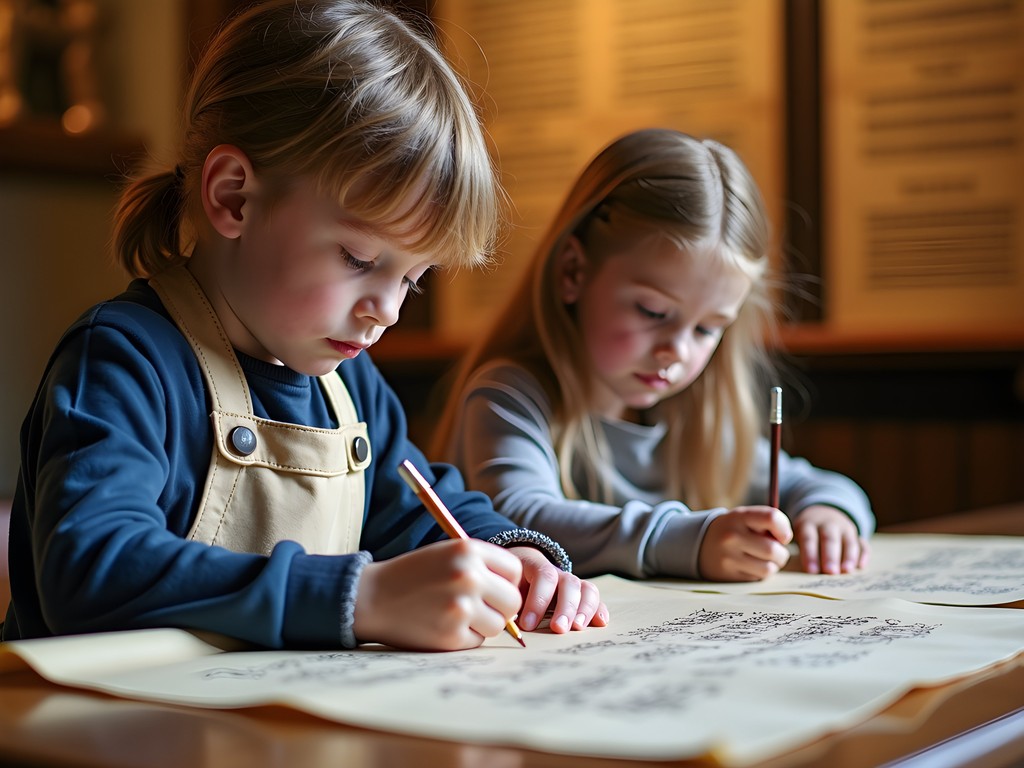
💡 Pro Tips
- Visit the Scriptorial Museum in Avranches for hands-on medieval manuscript activities
- Rent bicycles in Pontorson for family-friendly exploration of the countryside
- Seek out local food producers for authentic Norman culinary experiences
Final Thoughts
As our train departed Pontorson, carrying us away from Mont-Saint-Michel's silhouette, Lucas pressed his small hand against the window glass. "I want to be a knight who lives there," he whispered. His sister, more practical but equally moved, was already sketching the abbey's distinctive spire in her journal. In their responses, I recognized the profound impact of well-presented history on young minds—not as remote facts to memorize, but as living stories that invite participation. Mont-Saint-Michel offers families far more than a UNESCO checkbox; it provides a rare portal where children can physically step into history, where medieval engineering becomes a tangible puzzle rather than a textbook illustration. The experience reminds us that the most profound education often happens beyond classroom walls, in places where past and present converge in stone and tide. When you journey to this remarkable island with your children, come prepared but leave room for wonder. The memories you create will, like the abbey itself, stand resilient against time's passage.
✨ Key Takeaways
- Frame historical sites as adventures and mysteries to solve rather than passive tours
- Create hands-on activities like sketching, scavenger hunts, and journaling to engage children actively
- Balance abbey visits with outdoor exploration of the bay and surrounding countryside
- Consider the site's spiritual dimensions alongside its historical significance
📋 Practical Information
Best Time to Visit
Late May to early June or September (avoiding peak summer crowds while maintaining good weather)
Budget Estimate
€150-250 per day for a family of four (accommodation, food, entrance fees)
Recommended Duration
2-3 days minimum
Difficulty Level
Moderate (Considerable Walking On Steep Inclines And Stairs)

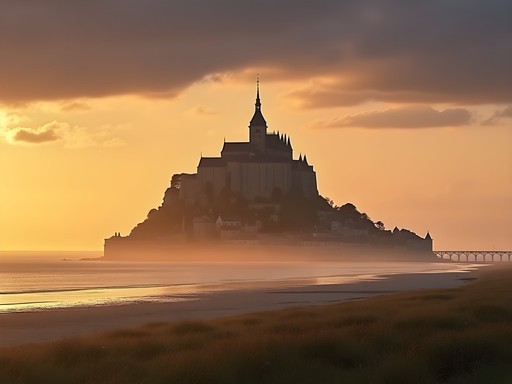


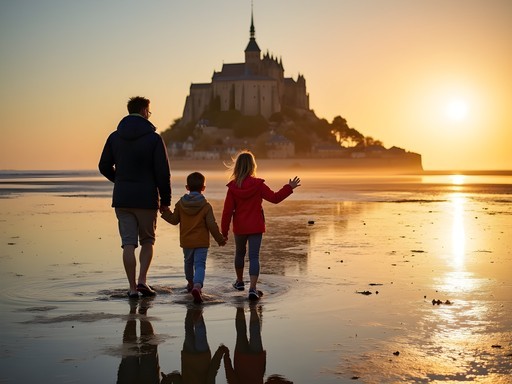
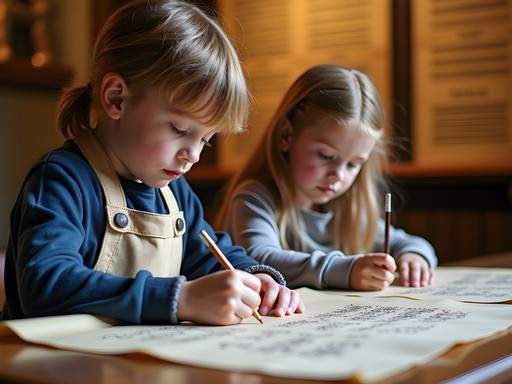




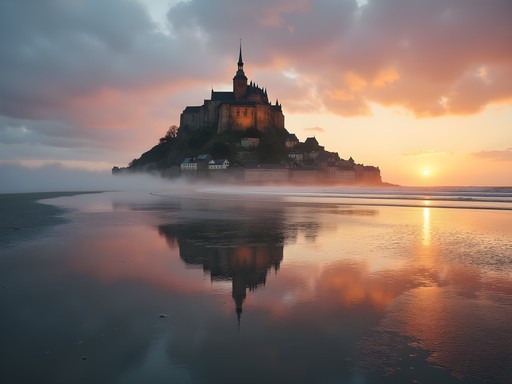
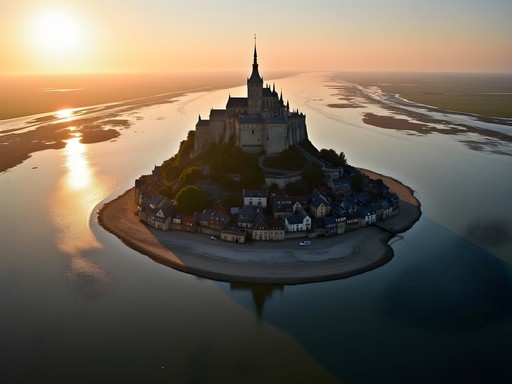
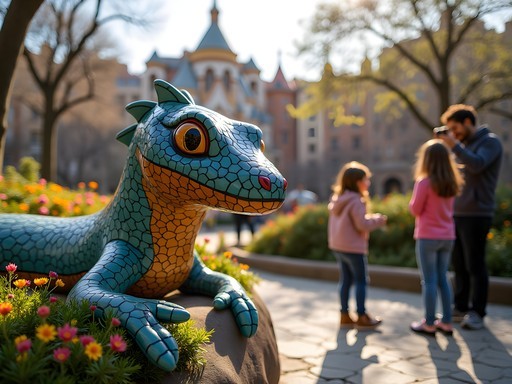
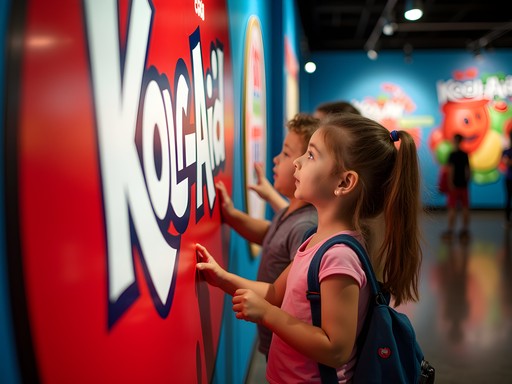

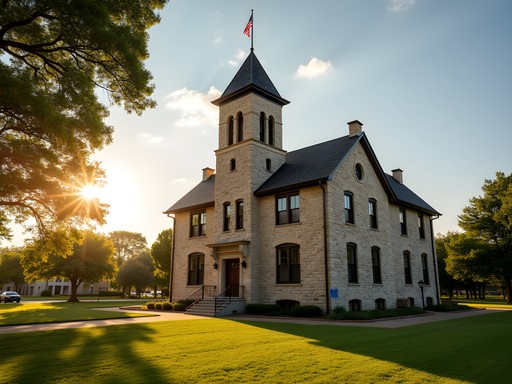
Comments
skyhero
Those photos of the kids looking out over the bay are magical! Can't wait to take my daughter here next year.
roambackpacker
Great post! How much time would you recommend allowing for the visit with kids? Is it doable as a day trip from Paris or better to stay nearby?
Sophia Cole
I wouldn't recommend it as a day trip from Paris - it's about 4 hours each way. We stayed in Rennes (1hr away) which worked well. With kids, I'd suggest at least 5-6 hours at Mont-Saint-Michel itself, ideally timing your visit to see the tide change!
Bryce Diaz
Sophia, your post brought back memories of my visit there last fall! While I typically travel solo, I ended up touring alongside a family with two young boys. Their parents had created a 'knight's quest' where the kids earned badges for spotting different architectural elements throughout the abbey. The excitement on those kids' faces was contagious - even this old solo traveler got swept up in their adventure! I'd add that the small museum at the entrance has some interactive elements that kids seem to love. And for families, I found the path along the outer walls less crowded and offering equally stunning views.
skyhero
That knight's quest idea is brilliant! Definitely stealing that for our trip in September.
summerpro
We visited Mont-Saint-Michel last year with our three kids (5, 8, and 11) and it was magical! One tip to add - we stayed overnight at a hotel on the mainland and took the shuttle at dawn. The abbey was practically empty and the kids felt like they had the whole medieval world to themselves. Also picked up a activity book before our trip which got them super excited about the visit. The tide coming in was definitely the highlight for our little ones!
wildnomad
This is exactly what I needed! Planning to take my niece and nephew (7 and 9) there this summer. Love the treasure hunt idea!
Sophia Cole
So glad you found it helpful! The treasure hunt was a huge hit - I recommend preparing little clues ahead of time that match specific architectural features they can spot.
wildnomad
Thanks for the tip! Will definitely do that. Did you find the stairs manageable for kids that age?
wanderclimber
That shot of the abbey silhouette at sunset is absolutely magical! Did you use any special camera settings?
Sophia Cole
Thanks wanderclimber! Just my trusty old DSLR with a tripod for stability. The golden hour light does all the work at Mont-Saint-Michel - I just had to be patient and wait for the perfect moment!
luckyway
Just got back from Mont-Saint-Michel with our kids (7 and 9) and followed your treasure hunt idea - absolute game changer! They were completely engaged searching for gargoyles and asking about knights. We stayed overnight at a hotel on the mainland and took the shuttle in early morning - magical with no crowds! The tide coming in was the highlight for my science-loving daughter. Thanks for the inspiration!
Sophia Cole
This makes me so happy to hear, luckyway! Those early morning moments are pure magic, aren't they? So glad your daughter enjoyed the tides - nature's daily drama at its finest!
Harper Moreau
What a wonderful post, Sophia! Your section on tidal rhythms reminded me of my visit last year. For families visiting Mont-Saint-Michel, I highly recommend timing your visit to witness the incoming tide - it's truly one of nature's most spectacular shows and absolutely mesmerizing for children. We found that the observation point near Barrage du Mont-Saint-Michel offered the best views. Also, the shuttle buses can have long queues during peak season, so arriving early (before 9am) made a huge difference for us. And don't miss La Mère Poulard's giant omelets - my kids were fascinated watching them being made in those huge copper pans!
beachlover
Those photos are stunning! Adding this to my bucket list right now.
Nova Rice
Sophia, you've captured the magic of Mont-Saint-Michel perfectly! I visited last month and stayed at La Vieille Auberge, which was absolutely worth the splurge for the sunrise views of the abbey. For families visiting, I'd add that the Kids' Travel Guide - France was a lifesaver with my niece and nephew. They particularly loved the medieval-themed activities. One tip I'd add: bring layers! Even in summer, the wind can be quite chilly when the tide comes in, especially for little ones. The evening light show during summer months is also spectacular if you can keep the kids up late enough!
Venture X
Premium card with 2X miles, $300 travel credit, Priority Pass